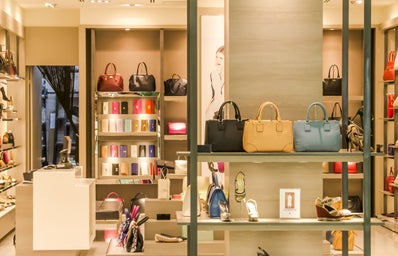When you search the term “plus size model” you get many responses such as: “a person that is average or above average in clothing sizes”, “a woman who is above the normal weight” and one from the Urban Dictionary which is pretty offensive: “a kind way of saying a fat person”.
There are a lot of misconceptions about what plus size actually is which is don to the fashion industry and individual fashion retailers who decide what this term means. For example, the term ‘Plus Size’ used to refer to a UK size 16 and above when it first came around and now the term can star from a UK size 12 which is lower than the average size of a woman which is a UK size 14 according to a Health Survey in England.
If a woman or man who is a size 12 or equivalent believes they are ‘plus size’ then we have a problem of encouraging fad diets, eating disorders and the idea that skinnier is better. Healthy is what people should be achieve and this does not necessarily mean skinny.
There are many factors to take into consideration when society tells us what weight we should be. For example, a person might have chronic illnesses such as multiple sclerosis or fibromyalgia, they might have Irritable Bowel Syndrome or thyroid disorders.
All of these problems contribute to a person’s weight and their ability to maintain a certain dress size therefore there are many instances that we cannot put a label on a dress size.
Well known model, Ashley Graham said in an interview on CBS : I think the word “plus-size” is so divisive to women. I think that when you use the word “plus-size,” you’re putting all these women into a category: “You don’t eat well.” “You don’t work out.” “You could care less about your body.” “You’re insecure.” “You have no confidence.”
Graham said that she does not want this term directed at her and that she considers each size to be individual. “Now, the fashion industry may persist to label me as “plus-size,” but I like to think of it as “my size.”
In fact, did you know that the plus-size fashion industry actually starts at a U.S. size eight? And it goes up to a U.S. size 16. So basically, what I’m saying is that the majority of this room right now is considered plus-size.”
There is no need for a reference to ‘plus size’ clothing. Sell an item in every size without the need to put a lable on a certain range of sizes. A UK size 16 should be able to wear the same outfit as a UK size 8 without feeling like they can’t wear it due to their body type.
When you search the term “plus size model” you get many responses such as: “a person that is average or above average in clothing sizes”, “a woman who is above the normal weight” and one from the Urban Dictionary which is pretty offensive: “a kind way of saying a fat person”.
There are a lot of misconceptions about what plus size actually is which is don to the fashion industry and individual fashion retailers who decide what this term means. For example, the term ‘Plus Size’ used to refer to a UK size 16 and above when it first came around and now the term can star from a UK size 12 which is lower than the average size of a woman which is a UK size 14 according to a Health Survey in England.
If a woman or man who is a size 12 or equivalent believes they are ‘plus size’ then we have a problem of encouraging fad diets, eating disorders and the idea that skinnier is better. Healthy is what people should be achieve and this does not necessarily mean skinny.
There are many factors to take into consideration when society tells us what weight we should be. For example, a person might have chronic illnesses such as multiple sclerosis or fibromyalgia, they might have Irritable Bowel Syndrome or thyroid disorders.
All of these problems contribute to a person’s weight and their ability to maintain a certain dress size therefore there are many instances that we cannot put a label on a dress size.
Well known model, Ashley Graham said in an interview on CBS : I think the word “plus-size” is so divisive to women. I think that when you use the word “plus-size,” you’re putting all these women into a category: “You don’t eat well.” “You don’t work out.” “You could care less about your body.” “You’re insecure.” “You have no confidence.”
Graham said that she does not want this term directed at her and that she considers each size to be individual. “Now, the fashion industry may persist to label me as “plus-size,” but I like to think of it as “my size.”
In fact, did you know that the plus-size fashion industry actually starts at a U.S. size eight? And it goes up to a U.S. size 16. So basically, what I’m saying is that the majority of this room right now is considered plus-size.”
There is no need for a reference to ‘plus size’ clothing. Sell an item in every size without the need to put a lable on a certain range of sizes. A UK size 16 should be able to wear the same outfit as a UK size 8 without feeling like they can’t wear it due to their body type.



